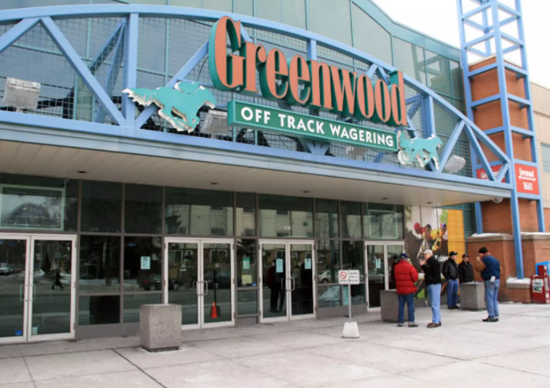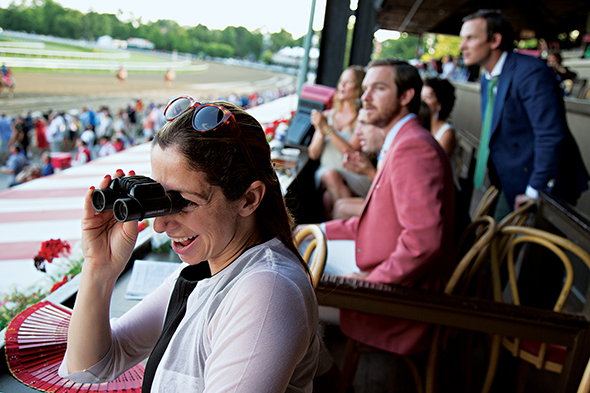Do You Have a Horse Racing Betting System?
5 min read
There are many types of racing today: cars, trucks, airplanes, boats, marathons for runners and joggers, downhill racing, and many, many more. This article covers the one known as “The Sport of Kings”.
Thousands of years ago, man discovered that an animal from the Equus order was good for carrying his burdens and lightening his load. Then one day, as the human race as a whole are natural competitors, we began to use that animal, called the horse, to race against others.
Then man began breeding horses to excel in speed and endurance. When this new type of entertainment and sport began to evolve, it was the nobility, or royalty, who could afford the expense of breeding horses for this purpose. Therefore, that “class” of people were the ones who most often enjoyed the leisure of competing in horse races.

Early picture records of horse racing were found in the origins of prehistoric nomadic tribesmen of Middle Asia. It was they who first domesticated the horse around 4500 B.C. The first written records came much later, after horse racing was already an established sport from Central Asia to the Mediterranean. Horse racing became a part of the Greek Olympics around 638 B.C. And the Roman Empire was obsessed with the sport.
Modern racing traces its roots back to the 12th century. Knights of the British Empire imported Arabic horses upon their return from the Crusades. In the years that followed, hundreds of Arab stallions were crossbred with English mares to give the most desirable combination of speed and endurance. This breed of horse became known, after its evolution, as the Thoroughbred and of course the nobility were leaders in staging competitions between two superior Thoroughbred horses for private wagers, as a diversion.
As the sport evolved to being more professional during the reign of Queen Anne in the early 18th century, one-on-one races gave way to events in which several horses competed. Racetracks offered purses, or prize money to the winner of the events. And those purses grew larger in order to attract the best horses.
During the mid-1700s, it was decided that there needed to be a governing body to determine the rules and standards by which racers, breeders, and owners must abide. As a result the Jockey Club was established in Newmarket, and still exercises complete control over English racing to this day.
Once the Club established the complete rules and standards of the horses and the races which could be run under sanction of the Club, five races were designated as the “classic” races for three-year-old horses. The English Triple Crown – which is open to both colts and fillies – consists of the 2000 Guineas, the Epsom Derby, and the St. Leger Stakes. Two other races, which are open only to fillies, are the 1000 Guineas and the Epsom Oaks.
As the British settled in America, they brought very fine breeding stock and racing horses with them. The first known racetrack in the Colonies was on Long Island in New York. It was first laid out around 1665. Though horse racing was a popular local event, organized and professional racing did not actually start until after the Civil War. From there, the sport escalated in popularity across the settled parts of the country. And many of the racetracks were run by the “criminal element.” As this was quite undesirable to the more prominent track owners and breeders, they met in New York in 1894 and formed the American Jockey Club. They soon established rules and regulations, similar to those of the English Jockey Club, and quickly eliminated much of the corruption.
The Kentucky Derby, one of the best known horse-racing events in the United States, was first run in 1875. Its home is at the Churchill Downs in Louisville, Kentucky. It is one of the three races which make up the American Triple Crown. The other two are the Belmont Stakes, first run on Long Island, New York at Jerome Park in 1867, and the Preakness Stakes, first run in 1873 at Pimlico Park in Baltimore, Maryland.
Although interest has waxed and waned over the years, horse racing is the second-most attended spectator sport in the United States, outranked only by baseball.
There are other forms of horse racing in both Great Britain and the United States. These include:
- The steeplechase, which requires the horse to clear such obstacles as brush fences, stone walls, rail fences, and water jumps. The oldest and most famous steeplechase in Great Britain is England’s Grand National. It was first run in Aintree in 1839, and continues even today. The most famous in the United States is the American National. It was first run in 1899 at Belmont Park and continues to be held there annually.
- Hurdle racing is similar to the steeplechase, but is much less demanding. It is often use as a training arena for Thoroughbreds who will later compete in steeplechases.
- Point-to-point races are generally run by amateurs throughout the British Isles.
- And last but by no means least is harness racing, which was very popular during the Roman Empire. Once the Empire fell the sport all but vanished until its resurrection, by those who liked to race their horses in harness on the country roads of America, at the end of the 1700s. The first official tracks for harness racing came about in the early 1800s, and by 1825 harness racing became a favorite attraction at country fairs all across the U.S.
Out of the rebirth of harness racing, a new breed of horse was born. In 1788, an outstanding English Thoroughbred stallion was imported to the United States. He was bred with American Thoroughbred and mixed-breed mares to establish the line of Standardbred. The name is based on the “standard” distance of one mile in harness racing speed. The descendants of this line were rebred over the years to create this new breed which has the stamina, temperament, and physical size and structure to endure racing under harness.
Although harness racing suffered a decline of popularity again in the early 1900s, it bounced back in 1940 after being reintroduced at a raceway in New York as a pari-mutuel betting event. Its number of tracks and scheduled annual events outnumber those of Thoroughbred racing in the United States today. It has also gained popularity in many European countries, Australia, New Zealand, and Canada.
What was once almost exclusively “the Sport of Kings” has segued over the years to encompass people of all lifestyles and income. It remains, however, a sport quite often associated with the “well-to-do”, those who can afford the vast expenditure involved with raising the standard of horse required to run in, and win, the large purses awarded by, the most popular horse-racing events around the world.




